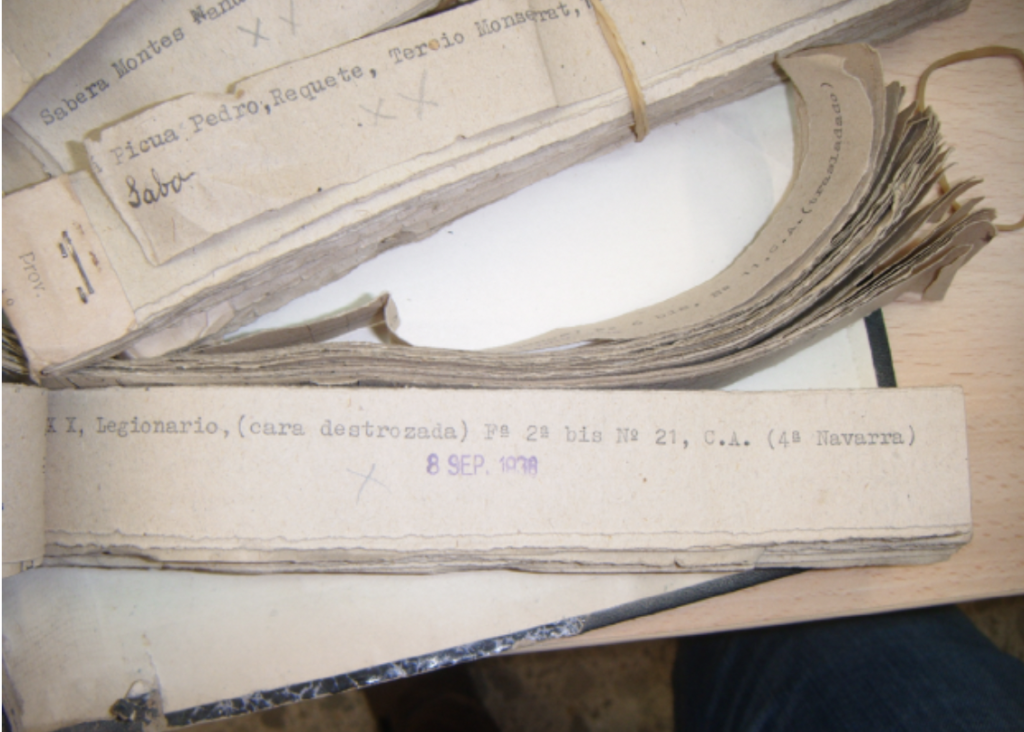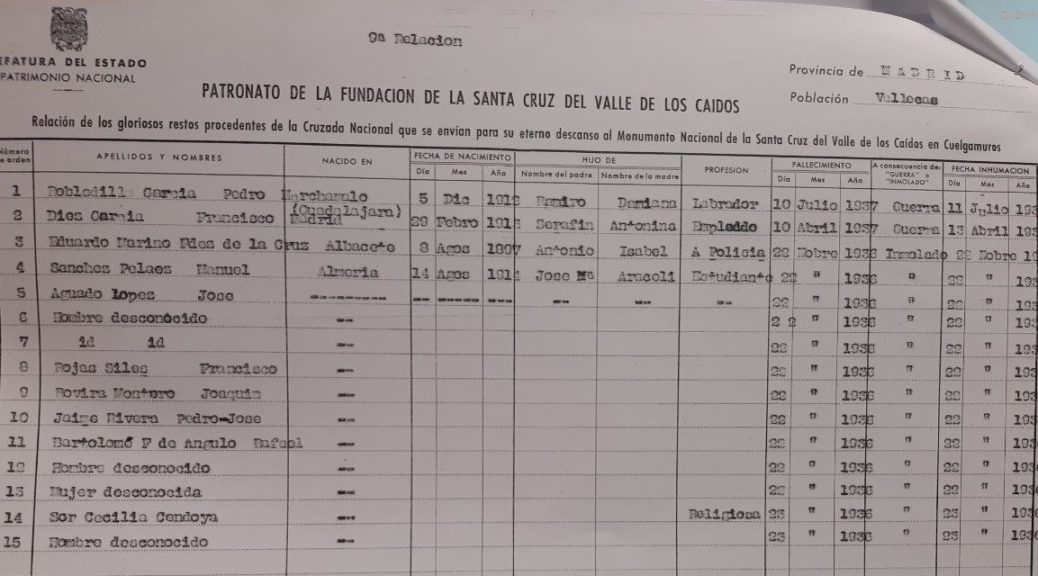Text: Concha Catalán / Laura Cuesta. Data and maps: Alejandro Zappala. With the assistance of Martin Virtel and Marta Martínez.
The year 1958 witnessed the beginning of a macabre exercise as lorries transported the remains of people killed during the Civil War along the roads of Spain. The objective was to use them to fill the largest mausoleum in the history of Spain, the Valle de los Caídos (Valley of the Fallen) which would be inaugurated on 1st April 1959, the twentieth anniversary of the formal end of the Civil War.
Today we begin a short series of articles dealing with the process of transferring these corpses to the Valle de los Caídos.
In 2018 we added to our data base the names of over 20,000 victims whose remains were transported to the Valle de los Caídos and we identified the provinces from which they were transferred. For details of this see The People Buried in the Valle de los Caídos: Where did they die?
Today we are taking a step further and providing new information about these people, namely the municipality from which their remains were transferred and the exact location of the original grave in the municipality if this information is included in the mass grave map which can now be found on the website of Memoria Democrática at the Ministerio de la Presidencia, Relaciones con las Cortes y Memoria Democrática [it was previously at the Ministerio de Justicia]. A description of the dataset is available via this link.
The analysis of this data is possible as a result of the work of our colleague Alejandro Zappala, to whom we are also grateful for using QSIG software to produce maps showing the population size of municipalities.

We think that this first map deserves some explanation, as it constitutes a real metaphor of the wounds exposed by the exhumation of the mass graves to transfer the remains of the victims to the Valle de los Caídos. The roads, shown in red on the map like human veins, run across Spain and, alongside them are indicated the locations from where corpses were exhumed before transportation. Each municipality where exhumation occurred is indicated by a brown colouring, the shade of which provides an indication of the number of victims whose remains were transferred. This means that the areas marked dark red, the colour of a bruise, indicate locations where the greatest number of corpses were exhumed.
The graph (below) provides data on the mass graves in the municipalities from which the remains of the largest number of victims were exhumed (it covers a total of 50 mass graves located in 47 different municipalities). The number of corpses which have been identified is indicated in green; the number unidentified is indicated in grey.

The data reveal that, in total, the remains of 33,840 people were moved to the Valle de los Caídos from 500 mass graves in 460 municipalities located throughout the territory of the Spanish state. It includes, for example, Ramon Piñeiro Jiménez and Francisco Ramos Rubio, from Ceuta, and Alfonso Prendes Estrada, from Melilla. The ten municipalities from which most corpses were exhumed and transported were as follows: Zaragoza (4,024 bodies), Griñón, Madrid (3,180), which was the location of rebel army field hospital; Teruel (2,916), Madrid (2,124), Getafe, Madrid (1,552); Bot, Tarragona (1,194); Oviedo (1,040), Gandesa, Tarragona (923); Grado, Asturias (920); and Huesca (855).
Not all of the corpses transferred were identified. The ten municipalities from which the largest number of identified corpses were taken were as follows: Zaragoza,(3,769); Griñón (2,217), Madrid (1,639), Bot (1,194), Teruel (1,142), Grado (870), Gandesa (863), Batea, Tarragona (835), Cella, Teruel (635) and Horta de Sant Joan, Tarragona (576).
There are a total of 11,688 people whose remains have not been identified. In the case of some municipalities, such as Bot or Batea (Tarragona), unidentified remains were not transferred. A high percentage of identified remains also came from Zaragoza (93%) and Gandesa (93,5%). One obvious factor in the variations in identification rates was the orders given to the rebel forces who were instructed to bury corpses with a glass bottle containing a sheet of paper listing the dead person’s name and military rank.

Batea. From the Archivo Municipal de Batea (Tarragona). Cited in The valley of the fallen: a new El Escorial for Spain, por Queralt Solé
Read also (pending translation)
- EL VALLE: PARA LOS CAÍDOS EN LA CRUZADA… Y OTROS
- LA DOCUMENTACIÓN DE LOS ARCHIVOS: CLAVE PARA INVESTIGAR EL VALLE DE LOS CAÍDOS -Entrevista con Queralt Solé.
PHOTO: Document belonging to el Patronato. “List of the honoured remains of members of the National Crusade which were sent to lie in eternal rest in the National Monument of Santa Cruz of the Valley of the Fallen at Culgamuros”. Photo by permission of Queralt Solé.
